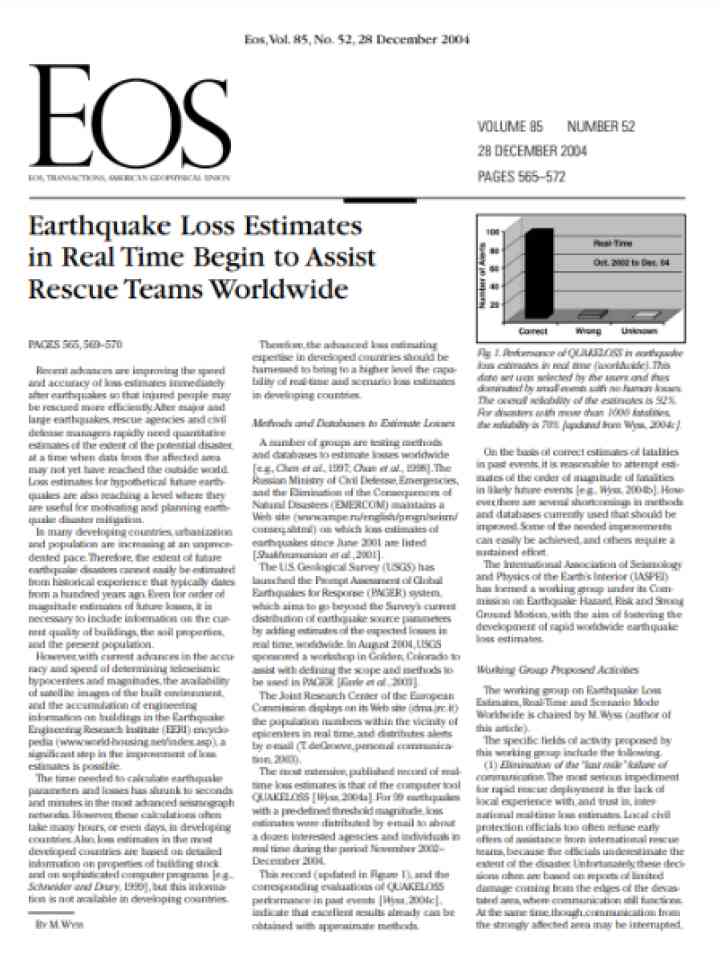Earthquake loss estimates in near real-time begin to assist rescue teams worldwide
The usefulness to rescue teams of near-real-time loss estimates after major earthquakes is advancing rapidly. The difference in the quality of data available in highly developed compared with developing countries dictates that different approaches be used to maximize mitigation efforts. In developed countries, extensive information from tax and insurance records, together with accurate census figures, furnish detailed data on the fragility of buildings and on the number of people at risk. However, in developing countries, the population at risk is estimated from inferior data sources and the fragility of the building stock often is derived empirically, using past disastrous earthquakes for calibration.
This paper explores improvements to a number of the elements that are needed for teleseismic loss estimation, in real time, as well as scenario mode. Some of the advances that are sought can be achieved easily, while others need protracted efforts. All are hands-on measures, not research proposals with uncertain outcomes; and all are guaranteed to lead to improvements in the reliability of real-time loss estimate.
Explore further
